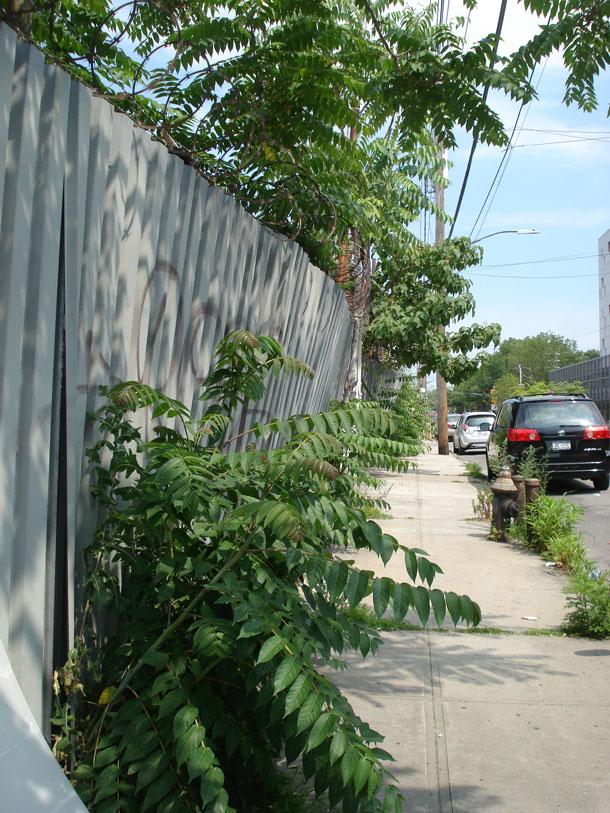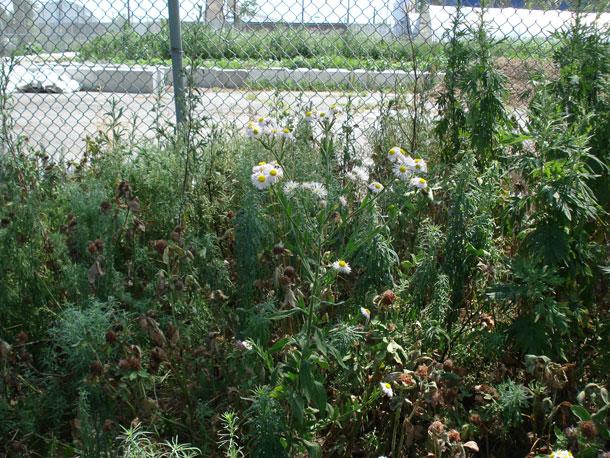A new book explores the hidden value of urban weeds
Fleabane is a spontaneous urban plant in the daisy family.
New York City landscape architect David Seiter is on a mission to emphasize the aesthetic and environmental benefits of what he calls "spontaneous urban plants" — what most of us call weeds.
“My intention is to rebrand weeds and get people to think about their ecological and performative values,” Seiter says. “We wanted to use the title, SUP, to get people's attention, and get them to think about what plants might be acceptable in an urban environment.”
The streets of Brooklyn, where Seiter works with landscape architecture firm Future Green Studio, are full of spontaneous urban plants: Queen Anne’s lace, bittersweet nightshade, and the ubiquitous ailanthus, also called the Tree of Heaven. Ailanthus is also called the Tree of Brooklyn, Seiter points out, because it was made famous by the book, "A Tree Grows in Brooklyn.”

“Ailanthus was intentionally cultivated in the '70s and, I think, as late as the early '80s, and then they realized its invasive potential,” Seiter says. “It was starting to grow in areas where we really didn't want it to grow. Since then, it’s become kind of the poster child of weeds, and right now this plant is covering New York City, as well as many other cities.”
These trees aren’t accounted for as urban trees, yet there's a forest of them, Seiter points out.
“They just are happening in smaller, discrete locations, and in locations that don't really qualify as green space — things like walls, streets, sidewalks and roofs. But you really find them as kind of this emergent vegetation everywhere,” he says.
For a recent project at a beer garden in Ridgewood, Queens, Seiter and his firm purposely incorporated existing weeds into its design — ailanthus, Japanese knotweed, mulberry plants. They also planted or seeded other typically urban plants, like sumac, chasmanthium and goldenrod.
“Not every weed is wonderful, but on a particular site that might be more urban, that's already degraded, these plants are actually the most successful, and can offer ecological and aesthetic value,” Seiter says.
Research suggests an urban flora is starting to emerge could almost be considered native, Seiter adds. According to this research, urban flora is less about the climate of a particular city or region and more about the urban conditions a city offers.
“Many of the same 150 to 200 plants that are growing here New York are being found in Berlin or in Seoul, South Korea, or in the Netherlands,” he points out. “It's fascinating to see.”
Seiter knows that some of the urban weeds he champions are problems. Phragmites, or the common reed, is the worst of them. Yet even these offer potential benefits, he argues.
“If you look at phragmites, it's appearing in many places where traditionally we would have found cattails,” he says. “Both plants have incredible filtering properties. … The phragmites, although it establishes these rampant monocultures and does have degrading effects on more naturalized areas, also offers a lot of value in treating and filtering out the polluted water that it comes in contact with. So we really have to think site by site.”
“The plants aren't here just because they want to be here — they're here because our conditions are degraded,” Seiter points out. “We're not fostering the native Northeast deciduous forest conditions, or, here in New York, the kind of tidal estuary conditions that we would have traditionally found. What we've created is a fully-altered and degraded system that the plants are just responding to and kind of taking advantage of.”
“Our perception of weeds is really just a cultural perception,” he concludes. “There's no particular reason why many of these plants are called weeds, except they are growing in places we don't necessarily want them to grow. So if we expand our definition of what's acceptable, I think we'll find many of these plants offer this kind of hidden or overlooked ecology to the city.”
This article is based on a story that aired on PRI's Living on Earth with Steve Curwood.
